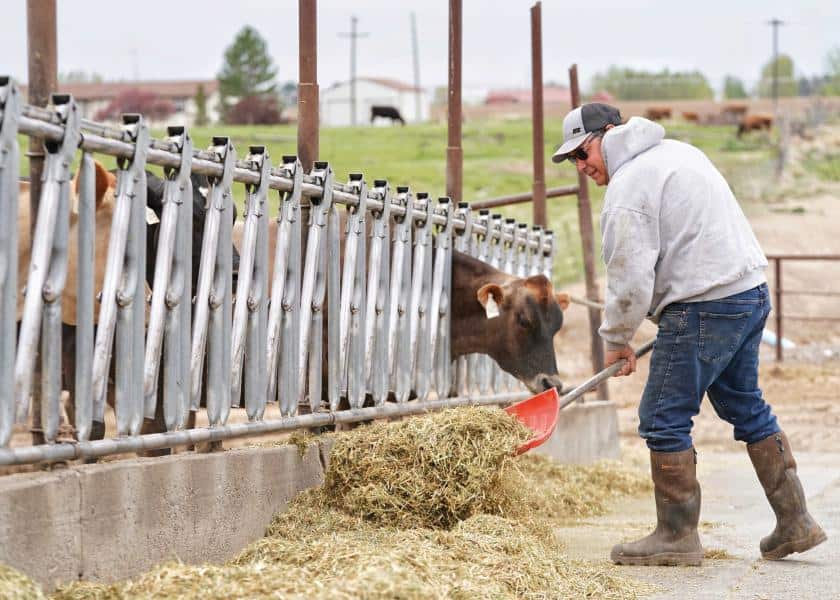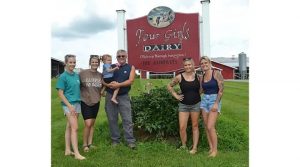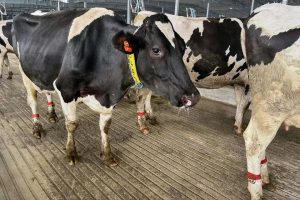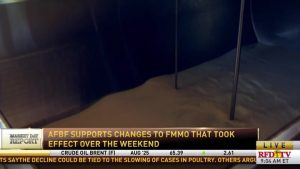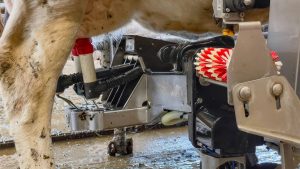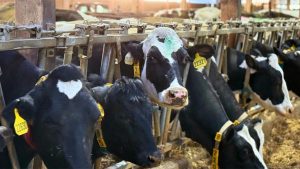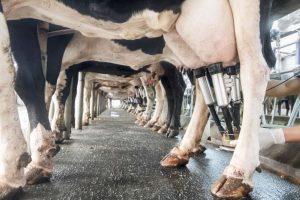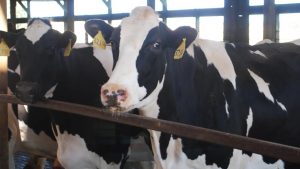
Sustainability efforts come naturally to dairy farmers, as they are quick to incorporate practices that better their land, cattle and family. In 2012, the Innovation Center for U.S. Dairy began recognizing outstanding stewardship through their U.S. Dairy Sustainability Awards program. Altogether, 77 leading dairy businesses have been honored due to their outstanding economic, environmental and social benefits to help advance dairy’s sustainability story.
Ballard Cheese
A decade ago, Ballard Family Dairy and Cheese in Gooding, Idaho, was honored with the award for Outstanding Achievement in Energy Efficiency by the Innovation Center for U.S. Dairy. While a lot has changed for this leading dairy in the last ten years, one thing has remained consistent—their drive for sustainability.
Steve Ballard says a lot of the decisions they implemented in their dairy and their cheese plant was based on evaluating a true return on investment.
Starting as a 100-cow dairy in 1995, Ballard and his wife, Stacie, built a cheese facility in 2003 to add additional revenue. In November 2021 the duo decided to sell their herd of cows, as they felt like they couldn’t compete.
“The large dairies came in and it is hard to compete for feed and straw,” he shares.
“We purchased a milk truck which made it really easy to make the switch,” Ballard says. “We just go down the road and get what we need for our plant.”
Moving Sustainability Forward
Mastering a way of making cheese that is conducive to their labor force, Ballard shares that working with their current labor with a more convenient schedule is part of their sustainability equation moving forward.

“We have been able to automate some things to make it easier on the employees,” Ballard shares. “We want them to have a better quality of life. Keeping employees happy is vital to us.”
The majority of Ballard’s ten employees are part-time.
“They have kids in school and they’re not willing to work full-time, so we had to adapt to a new kind of work scenario,” he says.
Ballard shares that the pandemic impacted their business and made them generate a new approach to how they spend money and run their business.
“COVID gave us a big awakening on everything that we’re doing. We’re more aware of how we spend money,” Ballard says. “The numbers must be there.”
Ballard feels like he was ahead of the curve when they set a goal to reduce their overhead by 10%, which led to an energy audit. Four primary areas of savings were identified:
- Using solar thermal power for the hot water system
- Installing LED lighting
- Replacing more efficient vacuum pumps
- Adjusting the milk cooling process

This allowed the Ballards to not only achieve their goal by saving more than $20,000 annually but also helped them to reduce their dairy’s carbon footprint by 121,500 lbs. per year. The dairy was also able to decrease its water footprint by annually saving more than 365,000 gallons. Altogether, the total cost of this combined project for the Ballards was $130,000 with a 5.5-year payback period and a simple ROI of 18%.
The takeaway advice that Steve Ballard can offer to other producers when it comes to investing in sustainability is to know your cost of operation.
“Be able to justify your investments. I think there’s a lot of things we do in sustainability that we don’t get credit for already,” he says. “I would also add that cow handling practices can always be improved, and all those things are little things that make a big difference.”
